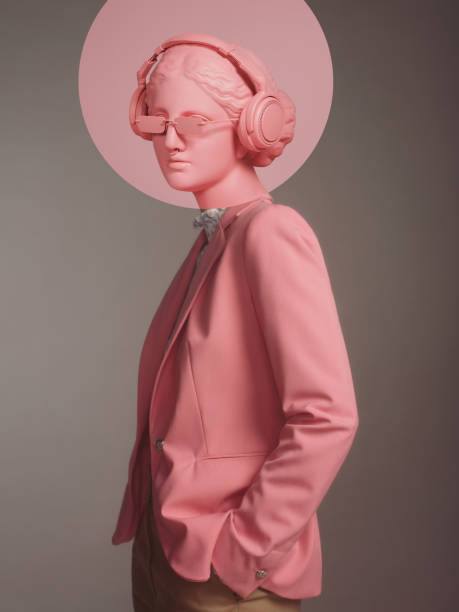Title: The Art of Jewellery Design: Creating Timeless Elegance
Introduction:
Jewellery design is an art form that has transcended centuries, weaving together creativity, craftsmanship, and personal expression. From ancient civilizations to modern societies, jewellery has adorned individuals, reflecting their status, beliefs, and emotions. The art of jewellery design not only involves envisioning stunning pieces but also requires an understanding of materials, techniques, and the unique stories they can tell. In this article, we delve into the world of jewellery design, exploring its history, significance, and the creative process behind crafting timeless elegance.
The roots of jewellery design can be traced back to ancient civilizations like Egypt, Mesopotamia, and the Indus Valley. These cultures used precious metals, gemstones, and intricate techniques to create ornaments that symbolized power, spirituality, and beauty. As time progressed, jewellery design evolved with the rise of different cultures and civilizations, each leaving behind a distinct artistic legacy.
Beyond mere embellishments, jewellery holds deep cultural and emotional significance. It serves as a medium to communicate one's identity, values, and social status. For some, it represents a talisman of protection and luck, while for others, it becomes an heirloom, passed down through generations. The craftsmanship behind jewellery design holds the power to evoke emotions, create lasting memories, and connect people across time and space.
Jewellery design is a meticulous process that combines creativity and technical skills. It begins with inspiration, drawing ideas from nature, history, architecture, or personal experiences. Designers then sketch their concepts on paper, visualizing the interplay of shapes, textures, and gemstones. Next, the selected design undergoes a transformation from a 2D sketch to a 3D model, employing specialized computer software or traditional sculpting techniques.
The choice of materials plays a vital role in defining a jewellery piece's character and durability. Gold, silver, platinum, and various alloys serve as the foundation for many designs. Gemstones, ranging from diamonds to sapphires and emeralds, add brilliance and color. A wide array of techniques, such as filigree, enameling, stone setting, and metal casting, enable artisans to bring their designs to life, ensuring each piece is unique and enchanting.
As with any art form, jewellery design embraces contemporary trends that reflect the changing tastes and preferences of consumers. Modern designers explore innovative materials, sustainable practices, and experimental forms, challenging traditional norms and pushing the boundaries of creativity. Ethical considerations, such as fair trade sourcing and responsible mining, have gained prominence, reflecting society's growing awareness of environmental and social impact.
Conclusion:
Jewellery design is an art that unites the past, present, and future. It celebrates the human spirit's quest for beauty and self-expression while showcasing the mastery of skilled artisans. From the grandeur of royal crowns to the simplicity of delicate necklaces, each piece tells a unique story, forever capturing moments in time. The art of jewellery design continues to thrive, enchanting generations to come with its timeless elegance and enduring allure.
Introduction:
Jewellery design is an art form that has transcended centuries, weaving together creativity, craftsmanship, and personal expression. From ancient civilizations to modern societies, jewellery has adorned individuals, reflecting their status, beliefs, and emotions. The art of jewellery design not only involves envisioning stunning pieces but also requires an understanding of materials, techniques, and the unique stories they can tell. In this article, we delve into the world of jewellery design, exploring its history, significance, and the creative process behind crafting timeless elegance.
- A Glimpse into History:
The roots of jewellery design can be traced back to ancient civilizations like Egypt, Mesopotamia, and the Indus Valley. These cultures used precious metals, gemstones, and intricate techniques to create ornaments that symbolized power, spirituality, and beauty. As time progressed, jewellery design evolved with the rise of different cultures and civilizations, each leaving behind a distinct artistic legacy.
- The Significance of Jewellery:
Beyond mere embellishments, jewellery holds deep cultural and emotional significance. It serves as a medium to communicate one's identity, values, and social status. For some, it represents a talisman of protection and luck, while for others, it becomes an heirloom, passed down through generations. The craftsmanship behind jewellery design holds the power to evoke emotions, create lasting memories, and connect people across time and space.
- The Creative Process:
Jewellery design is a meticulous process that combines creativity and technical skills. It begins with inspiration, drawing ideas from nature, history, architecture, or personal experiences. Designers then sketch their concepts on paper, visualizing the interplay of shapes, textures, and gemstones. Next, the selected design undergoes a transformation from a 2D sketch to a 3D model, employing specialized computer software or traditional sculpting techniques.
- Materials and Techniques:
The choice of materials plays a vital role in defining a jewellery piece's character and durability. Gold, silver, platinum, and various alloys serve as the foundation for many designs. Gemstones, ranging from diamonds to sapphires and emeralds, add brilliance and color. A wide array of techniques, such as filigree, enameling, stone setting, and metal casting, enable artisans to bring their designs to life, ensuring each piece is unique and enchanting.
- Contemporary Trends:
As with any art form, jewellery design embraces contemporary trends that reflect the changing tastes and preferences of consumers. Modern designers explore innovative materials, sustainable practices, and experimental forms, challenging traditional norms and pushing the boundaries of creativity. Ethical considerations, such as fair trade sourcing and responsible mining, have gained prominence, reflecting society's growing awareness of environmental and social impact.
Conclusion:
Jewellery design is an art that unites the past, present, and future. It celebrates the human spirit's quest for beauty and self-expression while showcasing the mastery of skilled artisans. From the grandeur of royal crowns to the simplicity of delicate necklaces, each piece tells a unique story, forever capturing moments in time. The art of jewellery design continues to thrive, enchanting generations to come with its timeless elegance and enduring allure.




